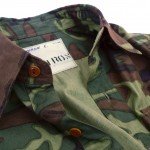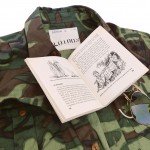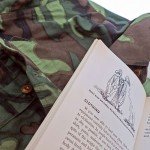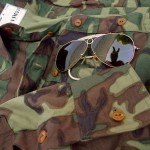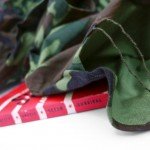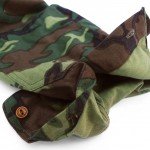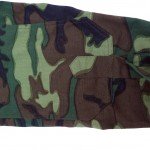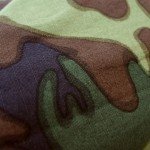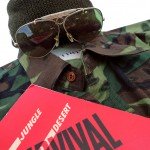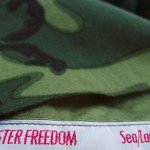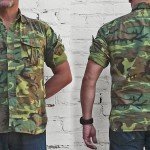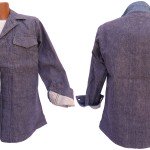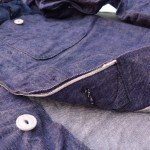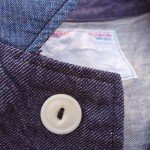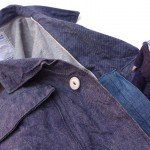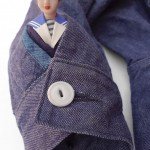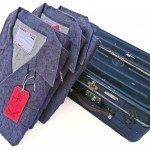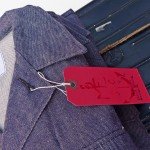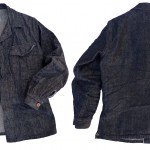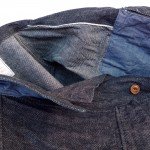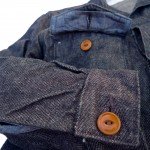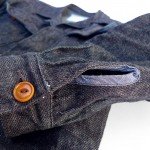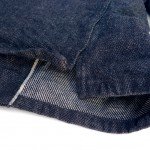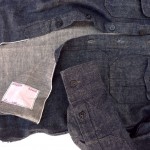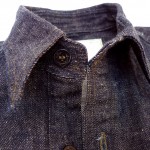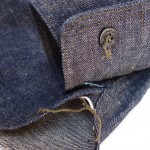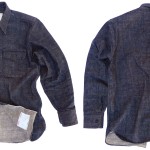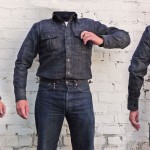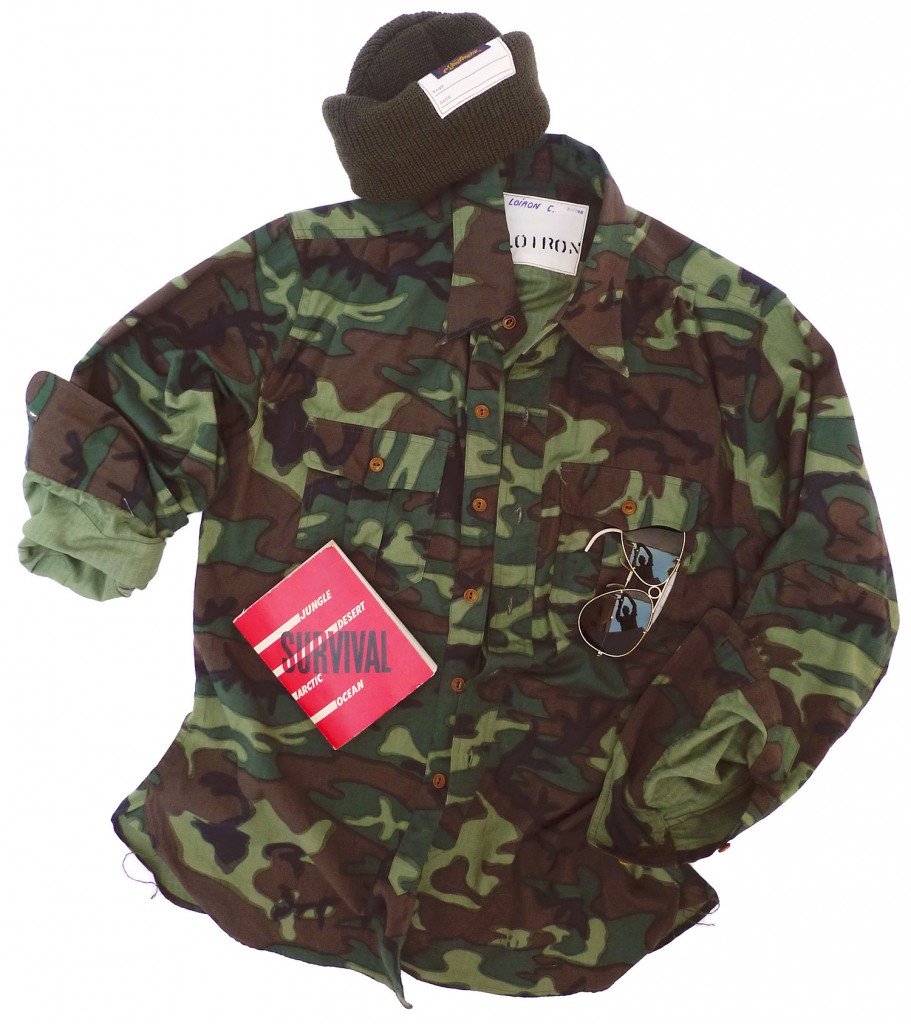
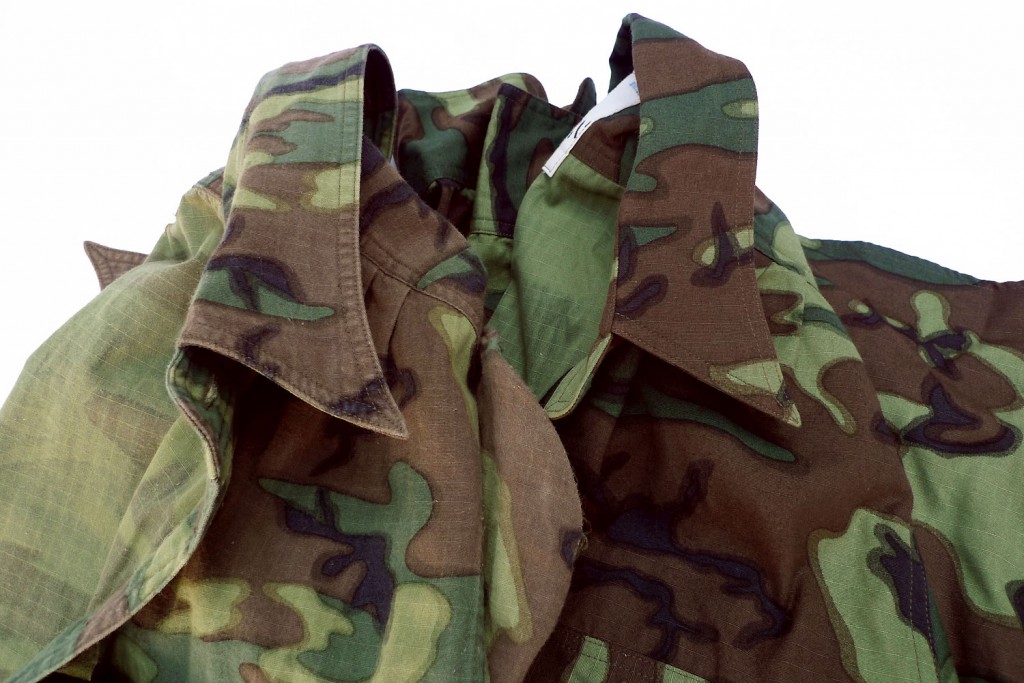 Well worn and washed vs. raw
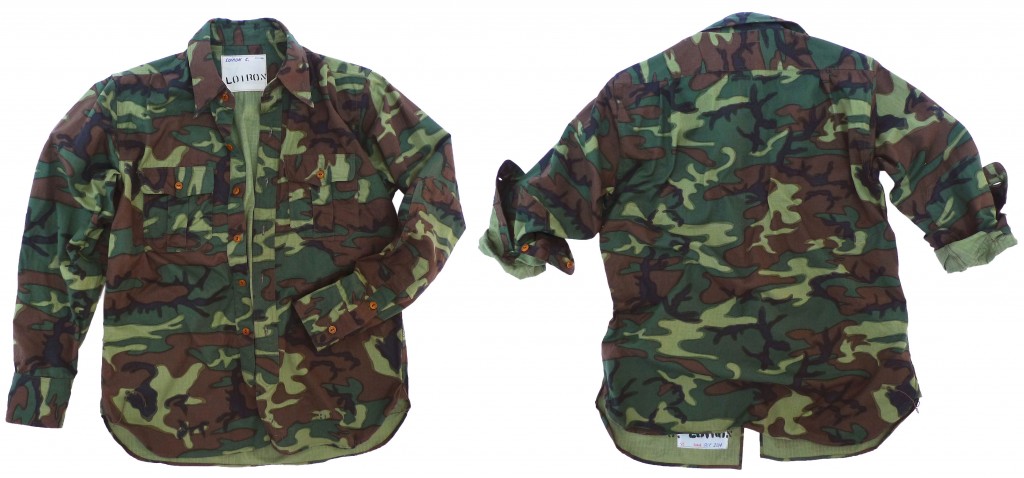
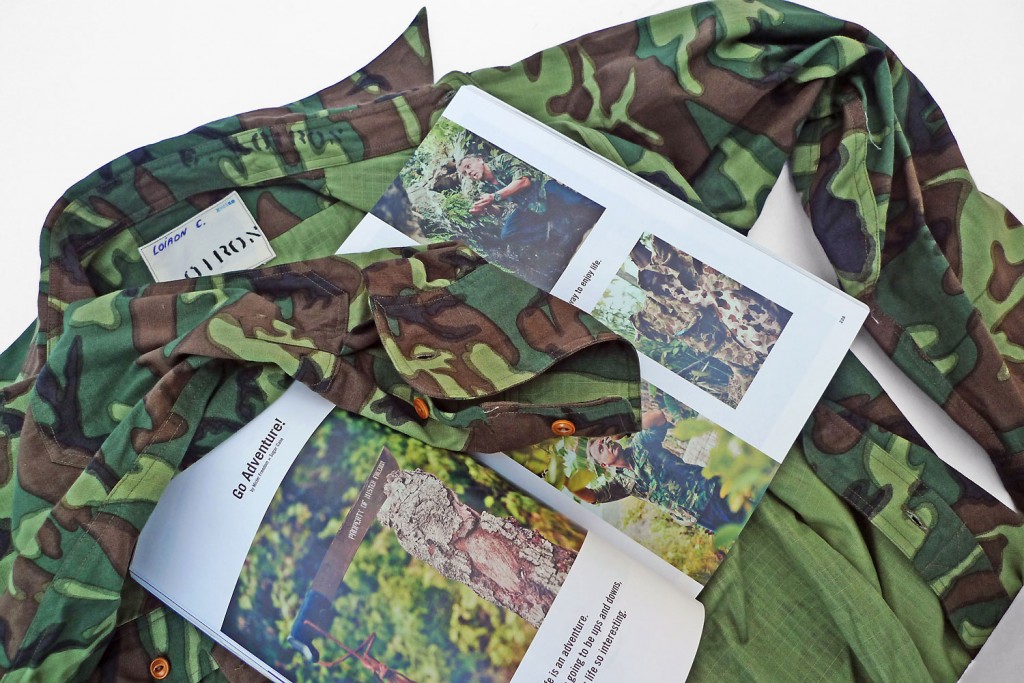 Clutch Magazine, Vol.22, November 2014. Please note that these are GREAT quotes, but NOT my quotes.
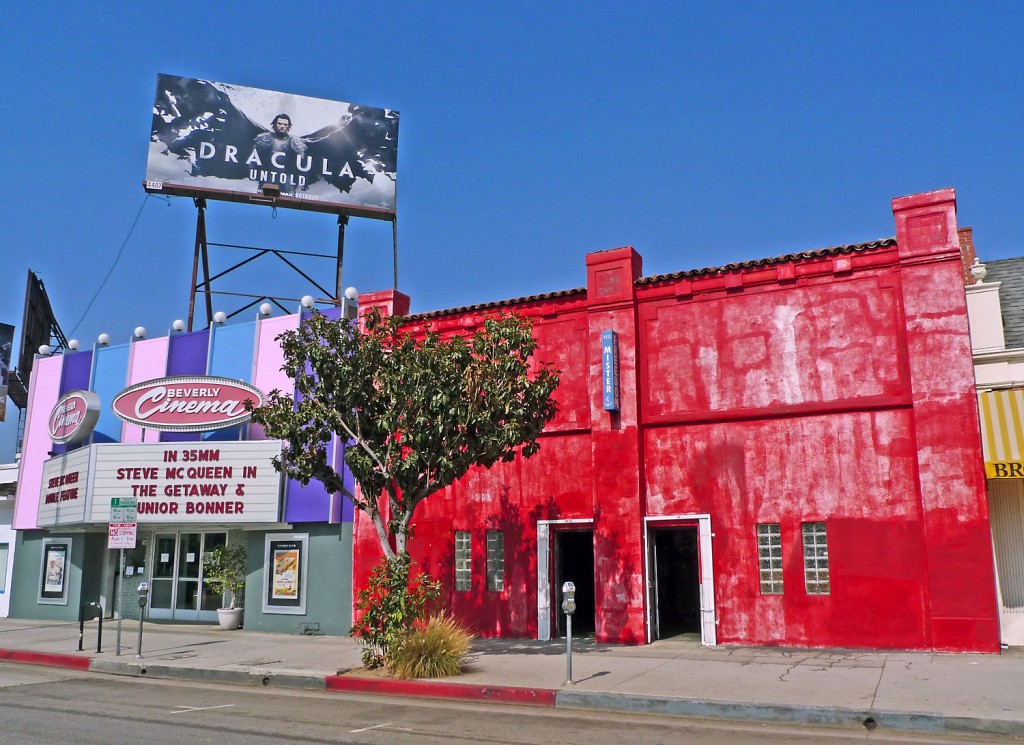 Just for a touch of color
ERDL Patrol Shirt
“Sea Hunt” mfsc collection Fall 2014
We are adding another option to our Patrol Shirt grouping. After introducing the arctic white, jungle green, USN-type chambray during the “Sea Hunt” Spring 2014 chapter, here is a camouflage number.
You are correct, there is also a blue one.
In the genuine camo family, “Lowland ERDL” is one that always caught my eyes, long before I knew its name. When rummaging through piles of military clothing in my raghouse-picking days, I seemed to consistently be drawn to its specific pattern/color combo.
Drawing attention is probably not what John Hopkins, chief designer of camouflage at the “Engineer Research & Development Laboratories” of Fort Belvoir, Virginia, had in mind when he designed the ‘leaf pattern’ in 1948…
This artistic attempt at blending in with nature was further developed at the US Army Natick Soldier Center by a team of experts led by scientist Alvin O Ramsley. (The brave few who submit themselves to these write-ups will note that we had already mentioned that legendary facility in a previous post, when introducing our Skipper Jackets.)
Subsequent testing and adapting of the still un-issued ‘leaf pattern’ lead to an official camouflage pattern referred to as ERDL. By 1967, it was optimized for the Vietnamese terrain.
A lime-dominant “Lowland” version was issued to US elite troops for their vacations in Southeast Asian jungles. Followed a brown-dominant “Highland” version (a tan color replacing the lime green), better suited for arid mountainous areas of the ski resort-type.
Within original vintage ERDL Vietnam-era fatigues, one will find quite a few variations of technically the same thing. My favorite tropical camies are those combining panels of both lowland and highland shades, the finest hours of the contractor QC department.
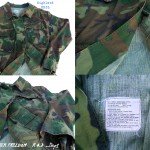
ERDL stayed a US Gov’t issue until 1981, when it eventually morphed into the ‘Woodland‘ pattern that replaced it.
When stealth became a part of specific jungle missions for our “Sea Hunt” team, ‘Lowland ERDL’ had plenty street cred and was quickly adopted. Such a mission has been captured on camera and some rare images can be seen in the November 2014 issue of Japanese CLUTCH Magazine. Viewer discretion is advised however, as the sheer thrill and daredevil requisites of that cliffhanger of an assignment are palpable on the photos, and could prove quite disturbing for some. Haunting stuff. You have been warned my friend. That six-page magazine spread is also punctuated by quotes I wish I had come up with, such as “Go adventure!”…
I did manage to p*** off a black rattlesnake with my walking stick, but that’s the one thing that is not on film.
Anyways, back to our design studio and the R&D phase. The original vintage sample we used to develop our interpretation of this classic camouflage is an authentic 1969-issued ‘Lowland ERDL’ bush hat found in ‘New Old Stock’ condition, still in its original clear plastic packaging. Until recently, an old Army/Navy surplus store in Oxnard, California, still had some of these sitting on its shelves…
As mentioned when introducing the P1942 Frog Skin camouflage fabric of our Map Shirt, the printing process for our ERDL fabric is complex, not computer-generated.
The base fabric, a 100% cotton ripstop popeline is originally stark white. Through rotary screen printing techniques, four colors in the distinctive ‘leaf pattern’ are applied to the face of the fabric, lime green/forest green/brown/black, with almost no bleed-though. The reverse of the fabric gets a solid lime green coat of ink.
If our colors were closely matched to those of the NOS bush hat, several other vintage ERDL samples were provided to the printing factory to instruct the ink experts on how we wanted our fabric to evolve overtime. Just as its original forefathers, our ERDL printed fabric will naturally fade.
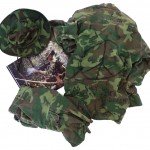 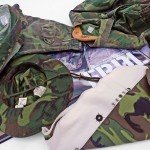
For those into the historical background of man-made camouflage, and fortunate to get their hand on a copy of the book, fascinating information can be found in Hardy Blechman’s “Disruptive Pattern Material” study.
Yet another fascinating book is the one displayed in the vintage ERDL gear shots above. It is the Vol.1 limited edition of “LRPP, Long Range Reconnaissance Patrol photos“, the works of Jay Borman. Thanks to Cory Piehowicz for the reference.
In terms of style, our Patrol Shirt is inspired by several vintage shirts from our archives, and is by no means a replica of Vietnam-era GI gear.
Throwing military/safari/uniform details in the MF® blender, the resulting garment is an apparently simple looking shirt. It features some fancy details however, most of which only the wearer will notice. This is not why people will stare at you while wearing this shirt, but take a look at the bottom of the button placket, on the inside, for some interesting folds and challenging pattern making magic.
Like its Spring 2014 predecessors, our ERDL Patrol Shirt features the usual elbow patches, box-pleat pockets, expansion ease-pleats, side gussets, rounded wrist cuffs…
The ERDL Patrol Shirt is designed in California by Mister Freedom® and manufactured in Japan in collaboration with Sugar Cane Co. Fabric milled and printed in Japan.
SPECS:
FABRIC:
100% cotton ripstop popeline, 4.75 oz., silkscreened with vintage 1960’s ERDL camouflage pattern.
Milled and printed in Japan.
DETAILS:
* All original mfsc pattern, inspired by vintage military, uniform and safari type shirting.
* Two box-pleat chest pockets, buttoned flap.
* Attractive 1940’s-style collar pattern.
* Early tailor-made custom uniform button placket.
* Elbow reinforcement patches.
* Side gussets.
* Double front & back expansion EZ-pleats on shoulder yoke.
* Corozo buttons, aka ‘ivory nut’, 100% wood, golden brown color.
* High stitch count 100% cotton tonal stitching.
* Vintage ½ cm wide flat-felled seam side construction.
* Double inside labeling: simple ‘minimalist’ neck patch (unbleached popeline stamped with sizing), and woven ‘Sea Hunt’ rayon label on bottom front panel (inside). Both to accommodate your own custom markings, if desired.
* Made in Japan
WASHING/SIZING:
This shirt comes raw/unwashed and will shrink to tagged size.
We recommend an original cold soak, spin dry and line dry.
Further care should be the low maintenance combo mild detergent/gentle cycle/cold water/line dry, as needed.
I wear a Medium in mfsc shirts and am a Medium in the ERDL patrol shirt.
Please refer to chart for cold rinse/line dry measurements.
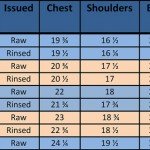
Available RAW/unwashed.
SIZES:
Small
Medium
Large
X-Large
XX-Large
Retail $329.95
Available from www.misterfreedom.com
Please call 323-653-2014 or email sales@misterfreedom.com with any questions not answered above.
Thank you sincerely for your support.
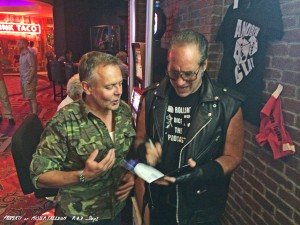 Field testing. Ooooh
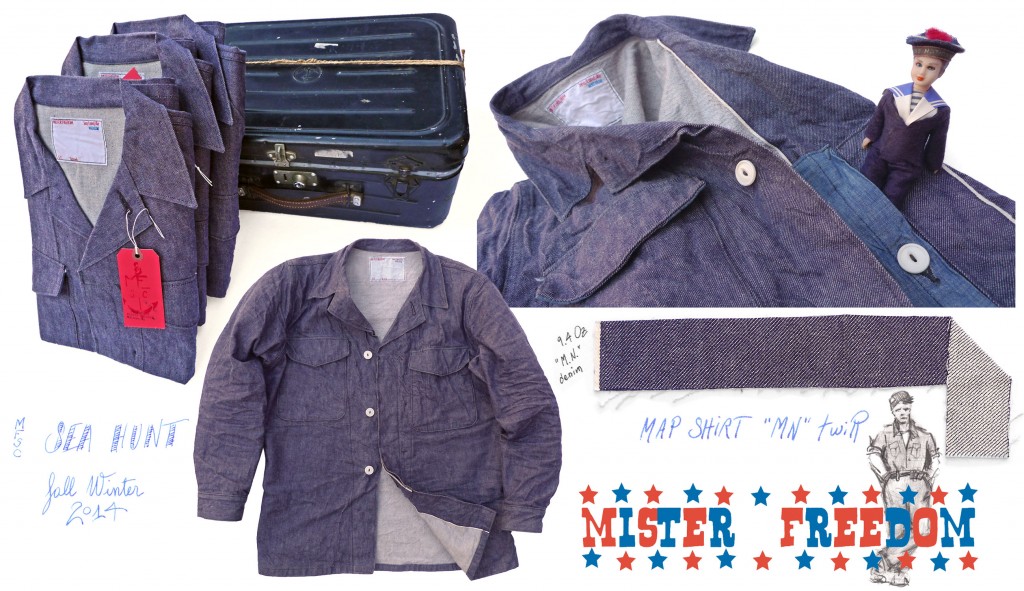
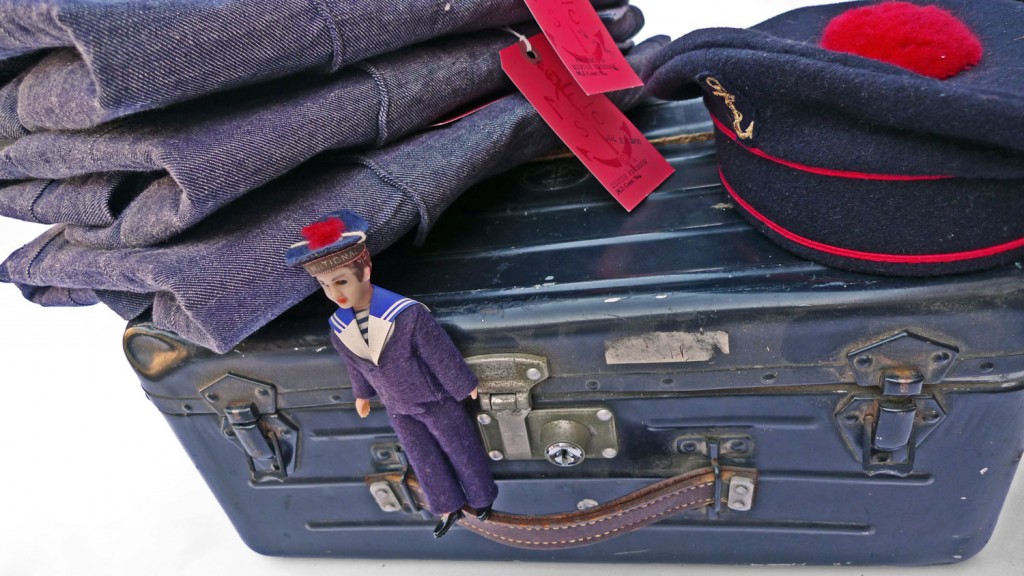

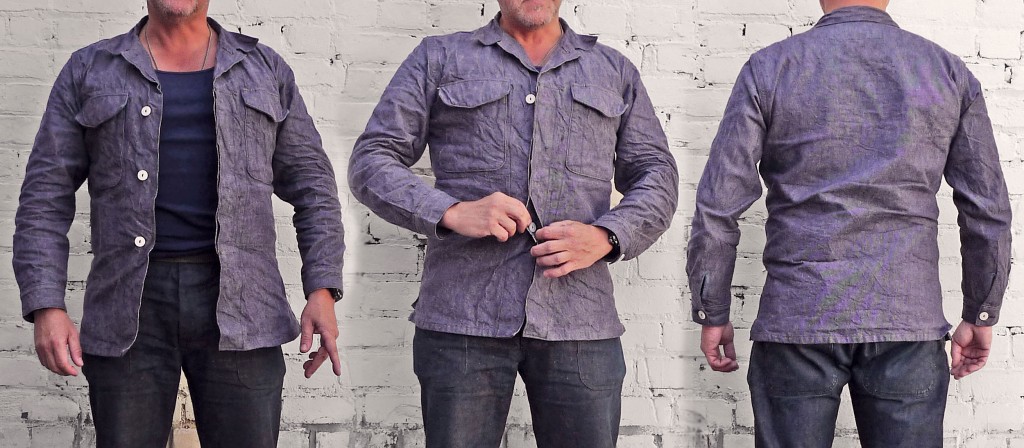
Map Shirt, “MN denim twill” issue
“Sea Hunt” mfsc Fall 2014
Here is numéro trois in our Map Shirt trilogy, its pattern as always inspired by the M1953 Utility Shirt issued to the Marine Corps in the 1950’s. For those feeling we have sufficiently milked that cow, knowing this is the final addition will come as a relief.
Having reached my batrachian-related joke quota I will respectfully mention that “MN” refers to “Marine Nationale“, aka the French Navy.
Sometime in the 1960’s, denim twill dungarees replaced the set of linen work clothes originally issued to French seaman recruits. These linen work tops and bottoms came in both white and bleu chiné. Our Spring 2014 Crew Pants, the “MN” model in cotton/linen, was a reference to that heather blue 1950’s version the cols bleus (the “blue collars”, aka the men with the red pompom) had in their sea bag.
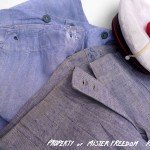 Vintage “Marine Nationale” linen work uniforms The cotton denim the French opted for as the replacement fabric for the work uniform in the 1960’s was in no way comparable to its dark indigo blue US Navy dungaree counterpart. It was much lighter in color. The warp had a definite purplish tone. The weft gave an almost solid white aspect to the reverse side of the denim.
I have to admit that I was not a big fan of that denim when the French Government decided to tell me what to wear in the mid 1980’s. Mostly embracing American culture courtesy of Hollywood at the time, sporting denim shorts (the summer issue of the work pants) and leather Hoh-Chi-Minh sandals, was quite the brutal departure from “The Wild One”, in my eyes. For years, I relegated that tenue n°105bis to squaresville. Until…
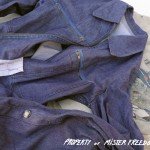 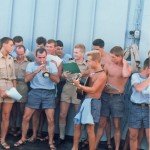
This denim eventually grew on me, as its own thing with its own History, to the point where it was no longer a pale version of something else.
Still referred to as bleu chiné in Naval circles, the contemporary Marine Nationale version of this work-clothes fabric is today made of a 65% poly and 35% cotton blend.
My fondness is limited to its earlier 100% cotton version.
The textile experts at Sugar Cane Co did an amazing job at instructing their factory in milling this “MN denim twill” from the authentic vintage swatches we had supplied. To be honest, the first fabric sample roll lacked the purplish hue and was too grey, but this production batch is spot on!
We chose to have it milled on shuttle looms, a costly process, opting for a solid white selvedge ID.
The result is an exclusive mfsc 9.4 oz. denim twill I am quite found of and proud to introduce for our “Sea Hunt” Fall 2014 chapter.
In our “Map Shirt” grouping, the pattern for the “MN” issue is shared with its “Cavalry Twill” sister, displaying the twill fabric selvedge on the front panel fold and on the button hole placket (only visible on the inside of the shirt).
For the batrachian-inclined, the frog skin version of our Map Shirt is discussed here and available there.
The “MN” Map Shirt is designed in California by Mister Freedom® and manufactured in Japan in collaboration with Sugar Cane Co.
Fabric milled in Japan.
SPECS
FABRIC:
9.4 oz. denim twill, 100% cotton, solid white selvedge ID.
DETAILS:
* Pattern inspired my 1950’s UMSC-issued utility shirts.
* Comfortable over-shirt fit.
* USN-type chambray accents (collar facing, wrist gussets, pocket flap facing, inside pockets)
* Two chest pockets with flap closure.
* Concealed button front closure.
* Selvedge button hole placket and front panel fold.
* One large map inside pocket, side opening.
* One concealed chest pocket, top opening.
* White corozo buttons (these buttons are wood, NOT plastic).
* Side slits.
* Flat-felled seam construction.
* Tonal 100% cotton thread stitching.
* Made in Japan.
WASHING/SIZING:
This garment comes raw/unwashed and will shrink to tagged size after an original cold soak/line dry.
I soak mine, spun dry and wore it damp to shape it. It fully dried on a hanger overnight and was crispy and ready to wear in the morning. Do not be alarmed if the fabric wrinkles, this is normal and not a defect.
Our Map Shirt is intended to be quite a comfortable fitting garment, easy to wear over a chambray shirt, a Tshirt… If you are a Medium in mfsc jackets/shirts, you are a Medium in the “MN” Map Shirt.
Maximum shrinkage to be expected with the use of hot water and heat dryer, but is NOT recommended, as unnecessary loss of color and unattractive marbling will occur.
This “MN” denim twill will eventually fade a bit with normal wear and subsequent washing, but the contrasts will not be as gratifying as the honeycomb-obsessed dream about.
When cleaning is required, we recommend hand washing in cold water with mild detergent and line dry.
Please refer to sizing chart for raw/rinsed measurements.
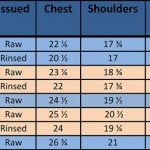
Available Raw/unwashed.
Sizes S, M, L, XL, XXL
Retail $349.95
Available from www.misterfreedom.com
Please call 323-653-2014 or email sales@misterfreedom.com with any questions not answered above.
As always, thank you sincerely for your support
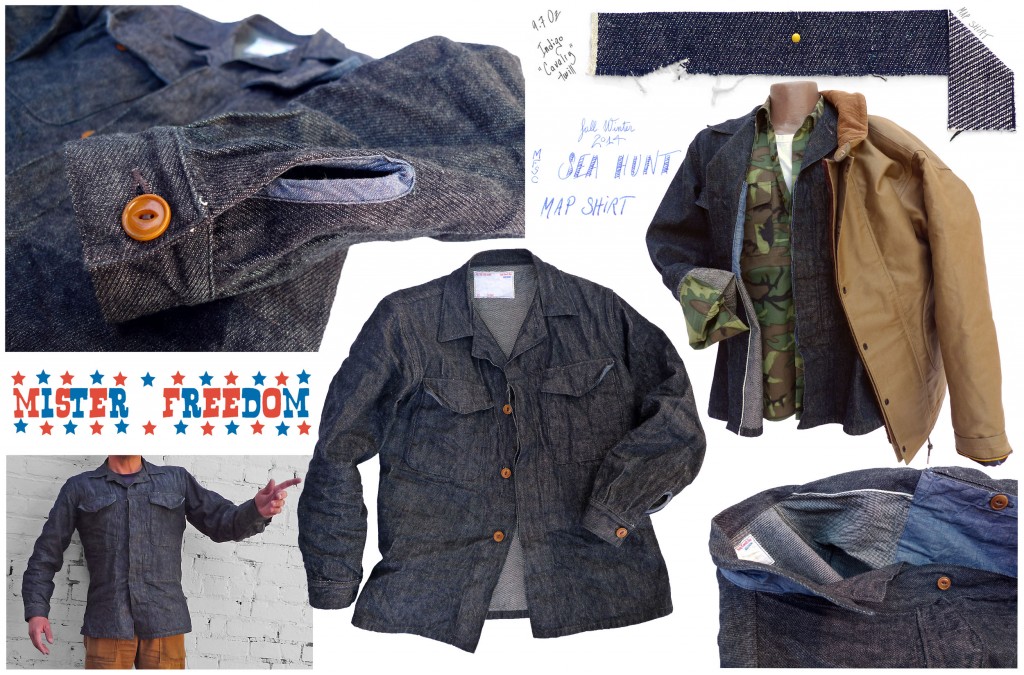
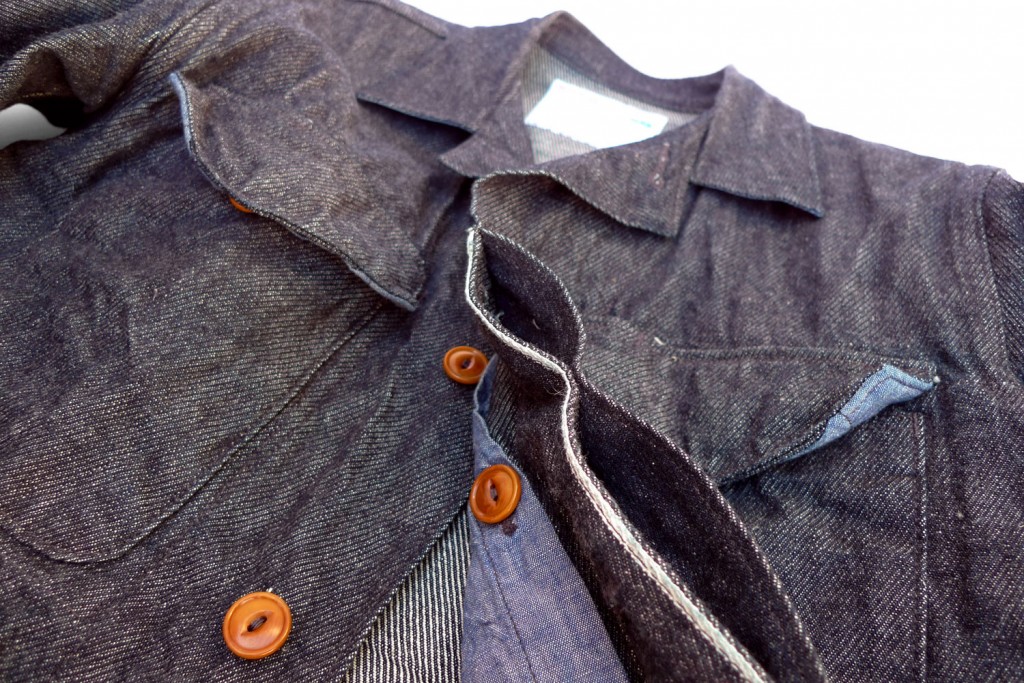
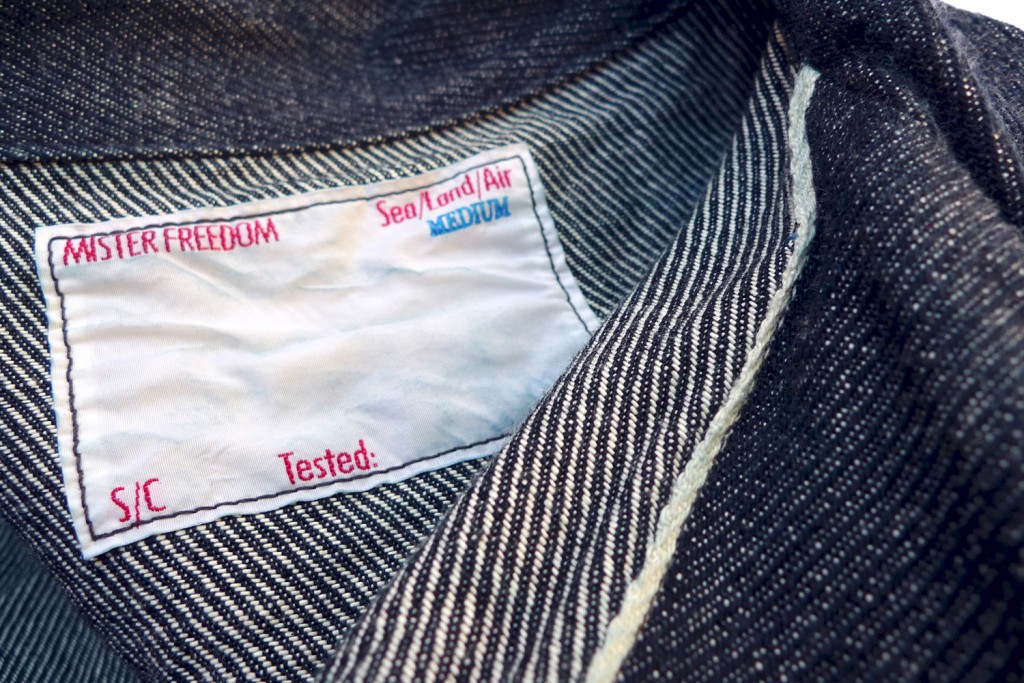
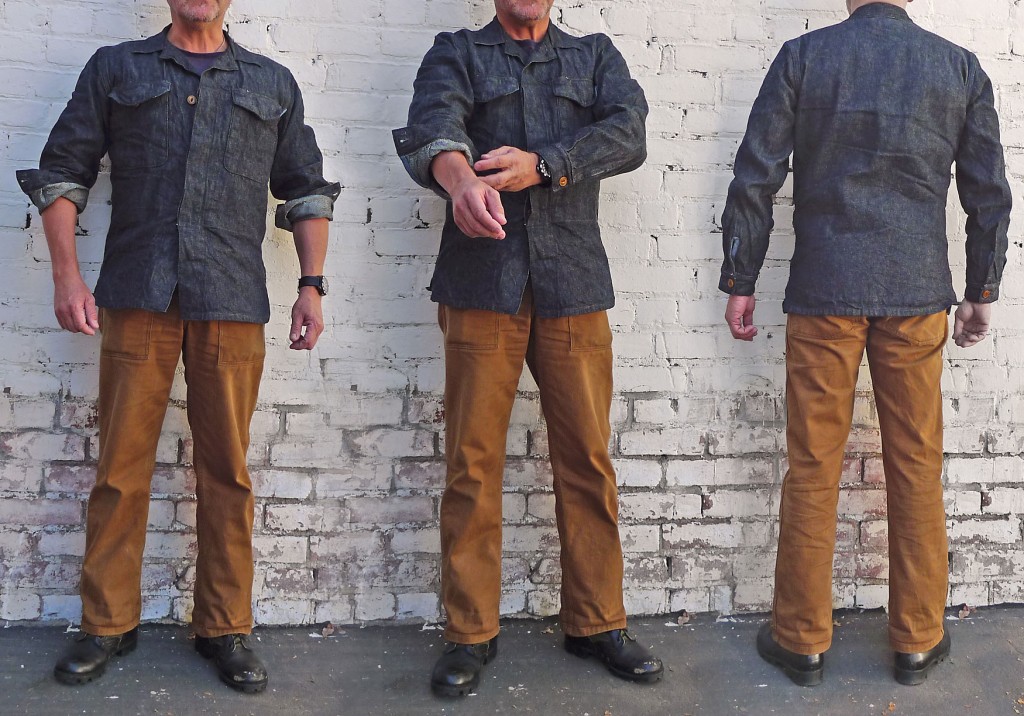
Map Shirt, Indigo ‘Cavalry Twill’ issue
“Sea Hunt” mfsc Fall 2014
Here is numéro deux in our Map Shirt family, its pattern still inspired by the M1953 “Gomer Pyle” Utility Shirt issued to the Marine Corps in the 1950’s.
This time nothing to do with frogs, if not for the fact that ‘Cavalry Twill’ shares its origin with tricotine, a double twill the French came up with around 1886.
After handing over to our friends at Sugar Cane a small swatch of vintage indigo cavalry twill from the Mister Freedom® textile archives, all we had to do around here was sit quietly and wait for DHL to deliver a sample of the new milled fabric… What came out of the Japanese mill tasked with duplicating our swatch was this obscure and dark selvedged denim-like twill…
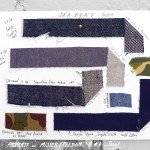 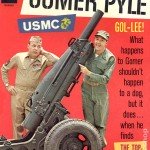 
It kind of looked like denim but was not technically denim, i was told. Someone started to technically explain me what made the indigo warp over the double weft a specific twill, in japanese, but I mentioned I had a 06:30 to get a tattoo.
If the resulting fabric looked more blackish-grey than indigo blue, a simple wash test settled all doubts we had a new ‘awsome‘ fabric for Fall 2014.
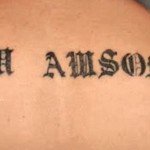 My awsome tattoo Back to our Map Shirt. The overall pattern is similar to its ‘frog skin’ sister, with a few adaptations, such as the use of the twill fabric selvedge on the two front panel folds and on the buttonhole placket. But only you will know.
The Cavalry twill Map Shirt is designed in California by Mister Freedom® and manufactured in Japan in collaboration with Sugar Cane Co. Fabric milled in Japan.
SPECS
FABRIC:
100% cotton indigo ‘Cavalry twill’, 9.7 oz., solid white selvedge ID.
DETAILS:
* Pattern inspired my 1950’s UMSC-issued utility shirts.
* Comfortable over-shirt fit.
* USN-type chambray accents (collar facing, wrist gussets, pocket flap facing, inside pockets)
* Two chest pockets with flap closure.
* Concealed button front closure.
* Selvedge button hole placket and front panel fold.
* One large map inside pocket, side opening.
* One concealed chest pocket, top opening.
* Light brown corozo buttons.
* Flat-felled seam construction.
* Tonal 100% cotton thread stitching.
* Made in Japan.
WASHING/SIZING:
This garment comes raw/unwashed and will shrink to tagged size after an original cold soak/line dry.
I soak mine, spun dry and wore it damp to shape it, just because it is still 105 in California. It fully dried on a hanger overnight and was crispy in the morning. Poifect.
Our Map Shirt is intended to be quite a comfortable fitting top, easy to wear over a chambray shirt, a Tshirt, or a Batman costume when it’s that time of the year.
If you are a Medium in mfsc jackets/shirts, you are a Medium in the Map Shirt.
Maximum shrinkage to be expected with the use of hot water and heat dryer, but is NOT recommended, as unnecessary loss of indigo dye and unattractive color marbling will occur.
This indigo cavalry twill fabric should be treated like premium indigo denim, as it will bleed, shrink/stretch, and fade with normal wear and subsequent washing.
When needed, hand wash in cold water with mild detergent and line dry.
Please refer to sizing chart for raw/rinsed measurements.

Available Raw/unwashed
Sizes S,M,L,XL,XXL
Retail $349.95
Available from www.misterfreedom.com
Please call 323-653-2014 or email sales@misterfreedom.com with any questions not answered above.
As always, thank you sincerely for your support
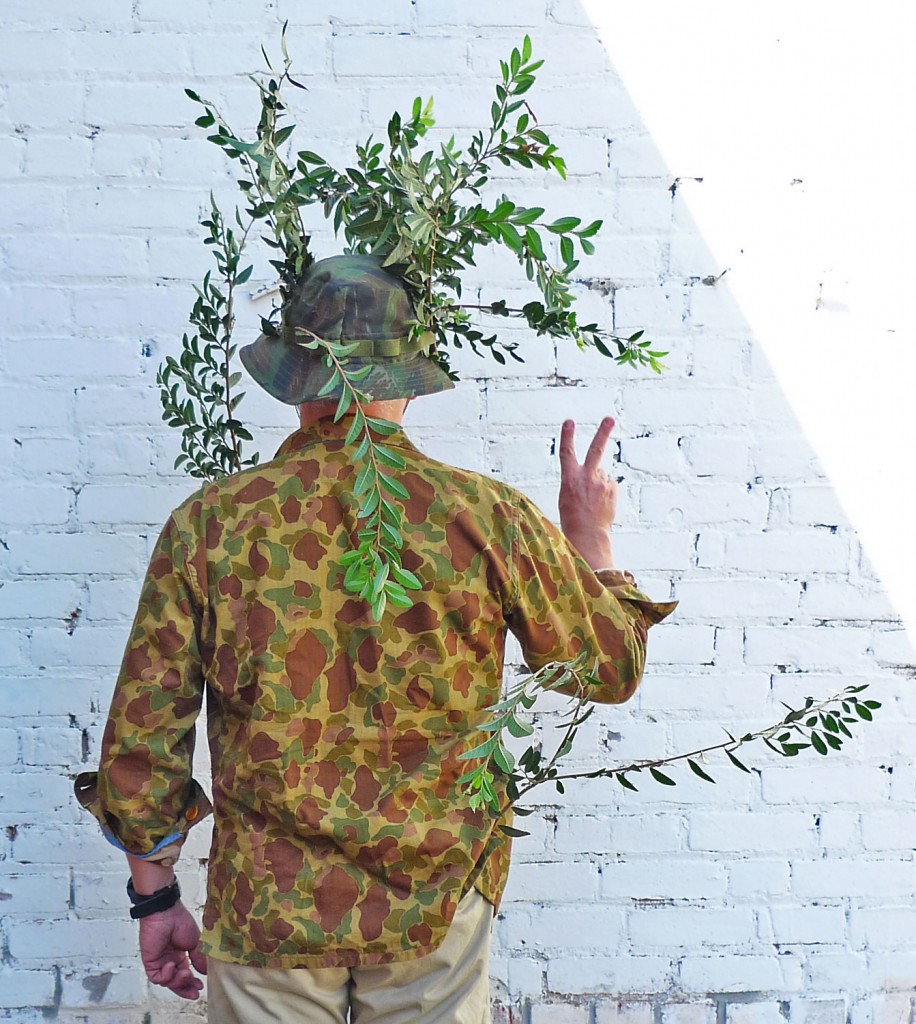
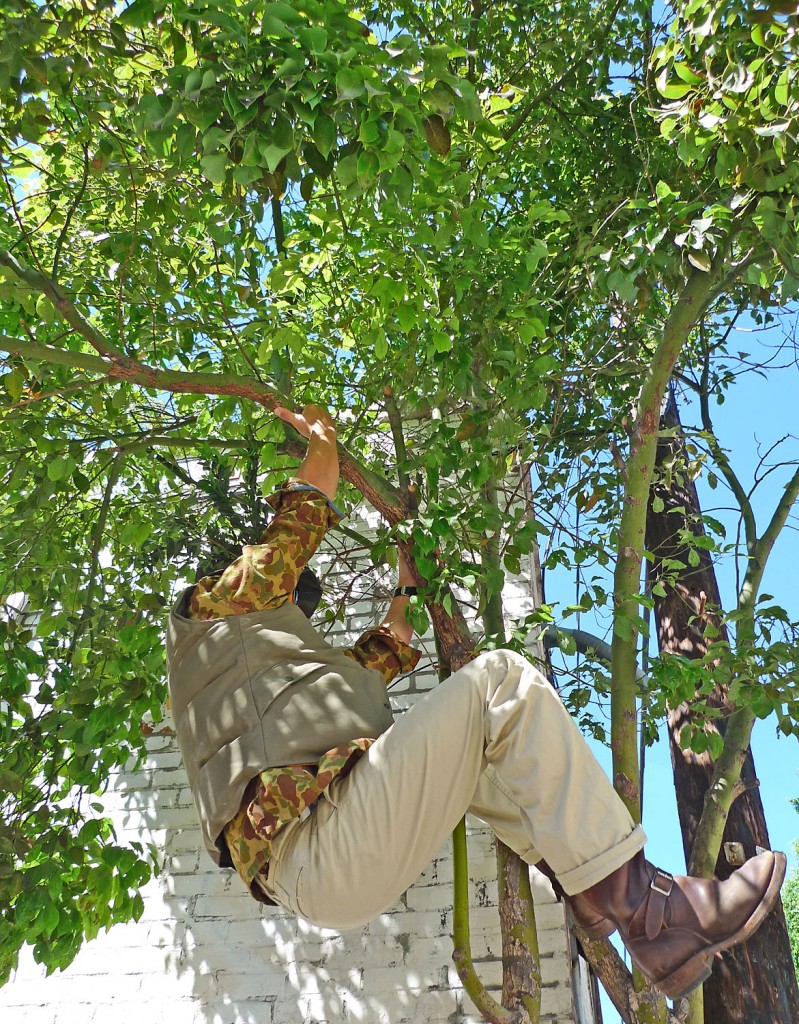
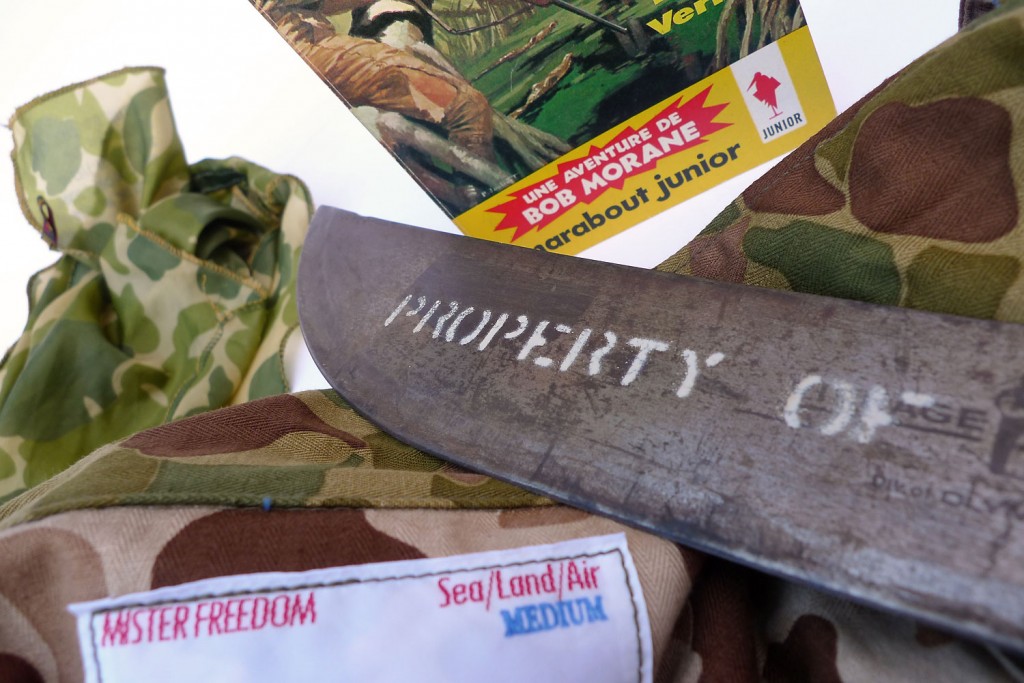
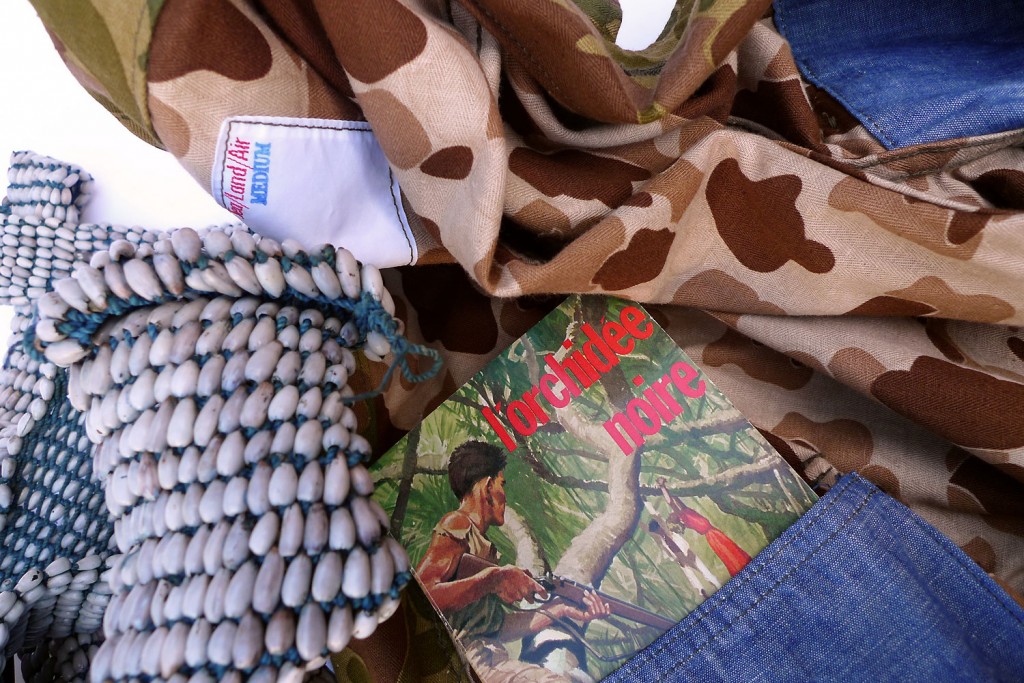
-
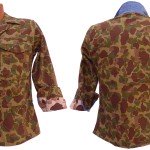
-
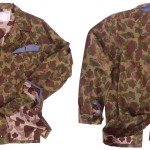
-
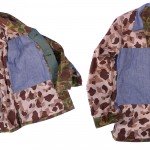
-
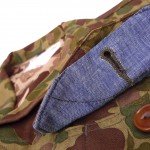
-
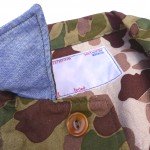
-
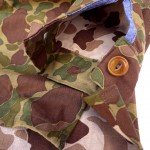
-
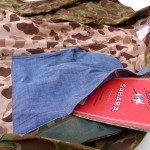
-
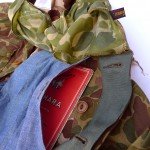
-
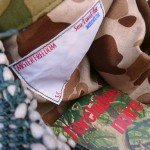
-
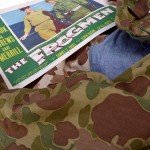
-
Lobby card courtesy of Andrew “Yesterday’s Heroes Vintage” Pruill
-

-
“Bullfrog & the Frog Skins” rehearsal
-

-
Don’t ask…
-
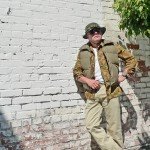
-
You taulkin to me?
-
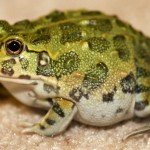
-
Rooaaaah roooaaaah
Map Shirt, “frog skin” issue
“Sea Hunt” mfsc Fall 2014
Following the landing of our enigmatic blue shirt, here is the second drop of our “Sea Hunt” 2014 Fall chapter.
Our map shirt gets its name from the large concealed chest pocket designed to hold the funny papers, aka topographic maps. Please note that it is not necessary to bring a map of the Sahara on any of the major Pacific islands.
As usual, we did not ask the US Army for permission to borrow the design of its M1953 utility shirt (M stands for model, P for pattern). The M1953 was originally issued to the US Marine Corps in the mid 1950’s. Early models were cut from OD herringbone twill, to be replaced in 1956 by a sage green cotton sateen version… The M1953 is the basic pattern of our Map Shirt.

Since our map shirt is no replica, we figured we’d give that “Gomer Pile” pattern a few MF® twists. It is available in three different fabrics for Fall 2014, and the first to be released is a camouflage version.
Italians are not only famous for having invented entertaining football in 2006, but also for coming up with the “telo mimetico” in 1929. That original ‘simulating fabric’ is known to be the first printed camouflage to be issued to troops. It came in the form of a half-shelter tent. This revolutionary concept beat any previous attempts from the French to hand paint foliage concealment on issued gear.
Little did the Italians know that camouflage would eventually be put to better use decades later, making it to Pitti Uomo, living rooms and closets.
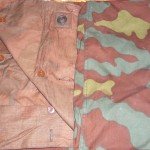  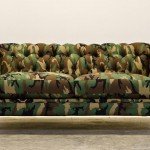 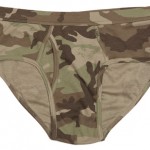
Our map shirt showcases a type of camouflage known as “frog skin”, “duck hunter” or M1942 US camo.
We specifically chose this one for two reasons:
1) It fell off the Buzz Rickson’s truck and we know Sgt. Bilko.
2) Because of an inspiring photo found in the book “Les Papous Coupeurs de Têtes“ (Tony Saulnier, 1961), based on the Oscar-winning film “Le Ciel et la Boue“, a documentary we mentioned when introducing the “Sea Hunt” watchman jacket. In an epic capture, one of the member of that 1959 expedition, a shirtless Gérard “machete” Delloye is seen wading through a New Guinea river carrying a military surplus USMC-issued frog skin jacket.
A fine example of how we seek the help of professional fashion forecasting services before launching new garments.
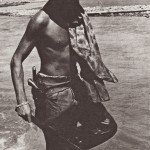 Gerard Delloye 1959 (Photo courtesy of Tony Saulnier) Most of you are by now familiar with the camouflage pattern of our Map Shirt. Frog skin military replicas and fashion items have been available for some time.
And now, a few words for the History buffs…
With its origins in the early days of WW2, the P1942 frog skin camouflage fabric is considered to be the first printed camouflage issued to American Armed Forces.
It is well documented that early tests for tropical warfare fatigues have been conducted around 1940, but most scholars still dispute the fact that field studies have involved Martha Vickers. We have R&D documents.
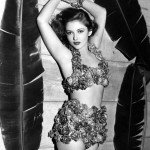 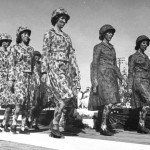
Tasked with providing US Marine Raiders with proper concealment in Pacific islands jungles, the US Army Corps of Engineers came up with a reversible fabric around 1942, printed with a green-dominant jungle side and brown-dominant beach side.
It eventually proved to be less efficient than hoped for by General McArthur’s fighting troops, and was mostly abandoned by the end of 1944, when its similarity with some Wehrmacht units camouflage attracted friendly fire in Normandy, France.
-
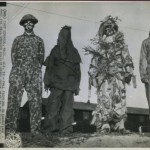
-
1943 Fall Fashion
-
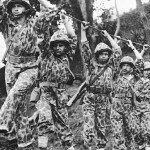
-
Raiders training, Courtesy Dept of Defense
-
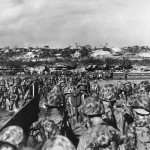
-
US Marines, Okinawa 1945
-
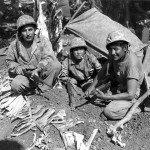
-
Navajo Code Talkers, Saipan 1944
-
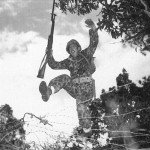
-
USMC Raider, Courtesy Dept of Defense
-
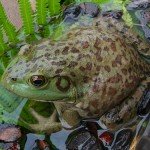
-
The P1942 OG
Meanwhile, back in this jungle…
Surprisingly, the 100% cotton base fabric is originally… white. Yes! After the HBT textile is milled, it is printed on each side with two different patterns, involving several screens and a total of five different colors. This double-sided printing process was a type of complicated silkscreen/roller set-up with partial bleed-through effect, and quite the novelty in the early 40’s.
Please note our P1942 camo fabric was printed using traditional methods, not computers. The keen eye will notice some pinhead-size white dots on our fabric. This is due to the slub of the yarn and also the lint specs present on the raw/unwashed white fabric at the time of printing. The lint gets printed as the top layer, leaving a white dot when brushed off. If you get a white spot the shape of a fly, that’s a collector.
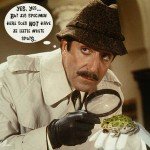
To clarify, our Map Shirt is not reversible. However, the fashion-forward will know to suavely roll the sleeves and display the ‘beach’ side at any given moment, triggering instant admiration and generating envy from peers.
We have added a touch of blue with concealed cotton chambray accents, for no other reason that we found the combo visually pleasing.
If this shirt can be worn tucked-in, as the original M1953 shirts were intended to, we have added side slits to compliment an un-tucked look. Anyone reading this is old enough to not be told how to wear their shirt anyways.
The “Sea Hunt” Map Shirt is designed in California by Mister Freedom® and manufactured in Japan in collaboration with Sugar Cane Co.
SPECS
FABRIC:
100% cotton Herringbone Twill (HBT), P1942 “frog skin” camouflage, double sided printing. Fabric milled in Japan for Buzz Rickson’s.
DETAILS:
* Pattern inspired my 1950’s UMSC-issued utility shirts.
* Comfortable over-shirt fit.
* Non-reversible.
* USN-type chambray accents (collar facing, wrist gussets, pocket flap facing, inside pockets)
* Two chest pockets, concealed button flaps.
* One large map inside pocket, side opening.
* One concealed chest pocket, top opening.
* Concealed button-hole tape placket.
* Light brown corozo buttons.
* Flat-felled seam construction.
* OD 100% cotton thread stitching.
* Made in Japan.
WASHING/SIZING:
This garment comes raw/unwashed and will shrink to tagged size after an original cold soak/line dry. Further shrinkage to be expected with the use of hot water and heat dryer.
It is intended to be a comfortable fitting shirt, easy to wear over a chambray shirt or Tshirt.
If you are a Medium in mfsc jackets/shirts, you are a Medium in the Map Shirt.
Because the base HBT fabric is white before being printed, toning down of colors will naturally occur. This fading should not be considered a quest or a defect, only the natural consequence of the wash/wear process over the years.
Please refer to sizing chart for raw/rinsed measurements.
(Please note that if we do our best to scientifically measure garments, the Art of measuring seems to be a subjective concept we are working on to master.)
CHART
Available Raw/Unwashed
Sizes: Small, Medium, Large, X-Large, XX-Large
Retail: $379.95
Soon available from www.misterfreedom.com
Please call 323-653-2014 or email sales@misterfreedom.com with any questions not answered above.
As always, thank you sincerely for your support
🙂
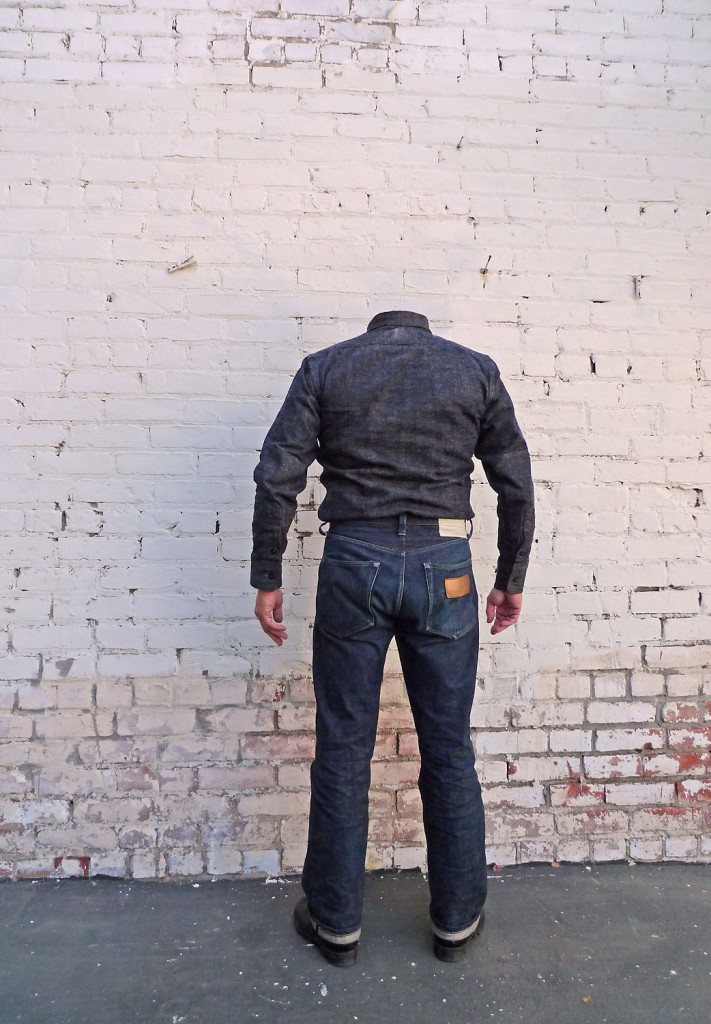 Louis XVI, in our elegant blue shirt.
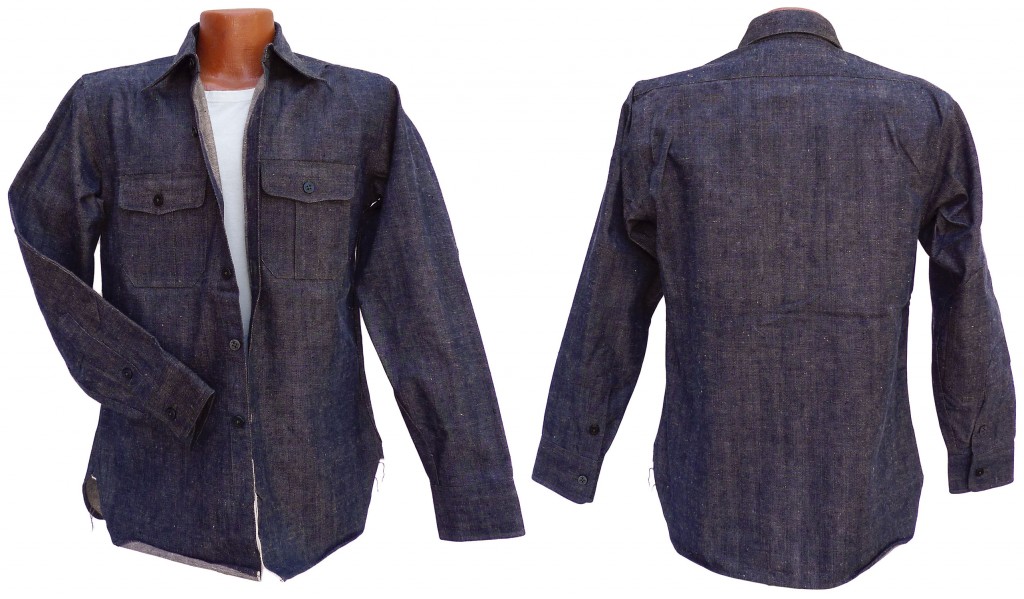 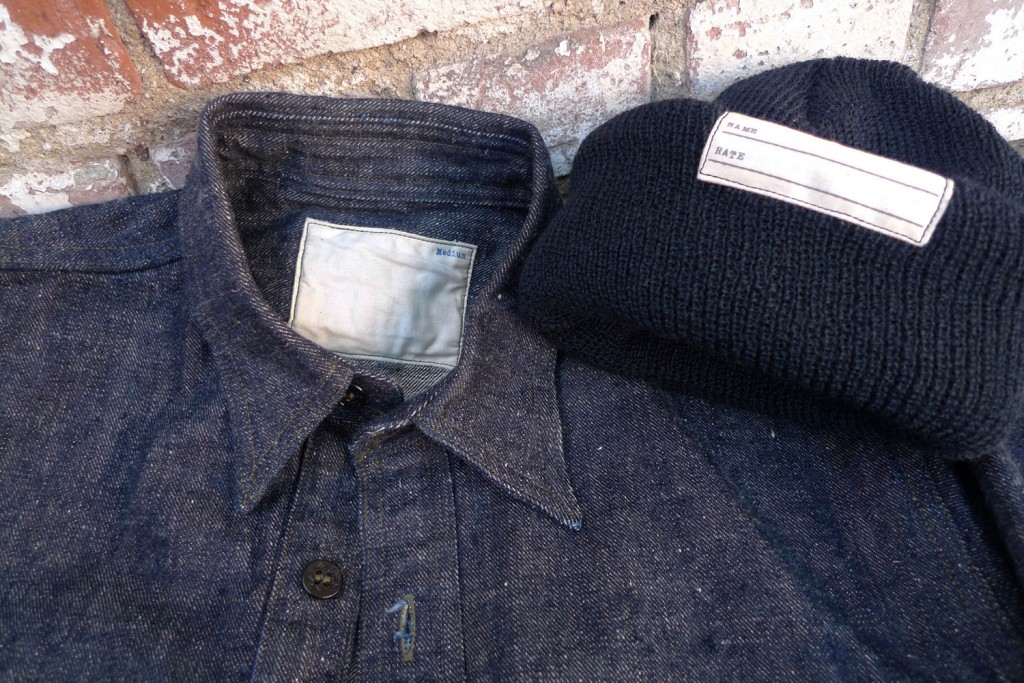
Indeed, they come in different colors.
This one is blue.
Designed in California by Mister Freedom®, manufactured in Japan in collaboration with Sugar Cane Co. Fabric milled in Japan.
Available RAW/unwashed.
SIZES:
Small
Medium
Large
X-Large
XX-Large
Retail $384.95
Soon available from www.misterfreedom.com
Please call 323-653-2014 or email sales@misterfreedom.com with any questions not answered above.
Thank you sincerely for your support.
BREAKING NEWS!!!!
We can’t hold it any longer. The rumors of a Special Edition BS (Blue Shirt) are indeed TRUE.
Here is a preview.
And that’s just the outside.
To pre-order email audigier@monsterfreedom.com
(limit 5 blue shirts per customer)
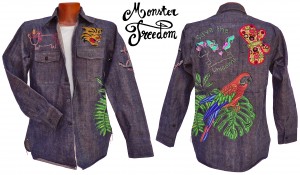
|






